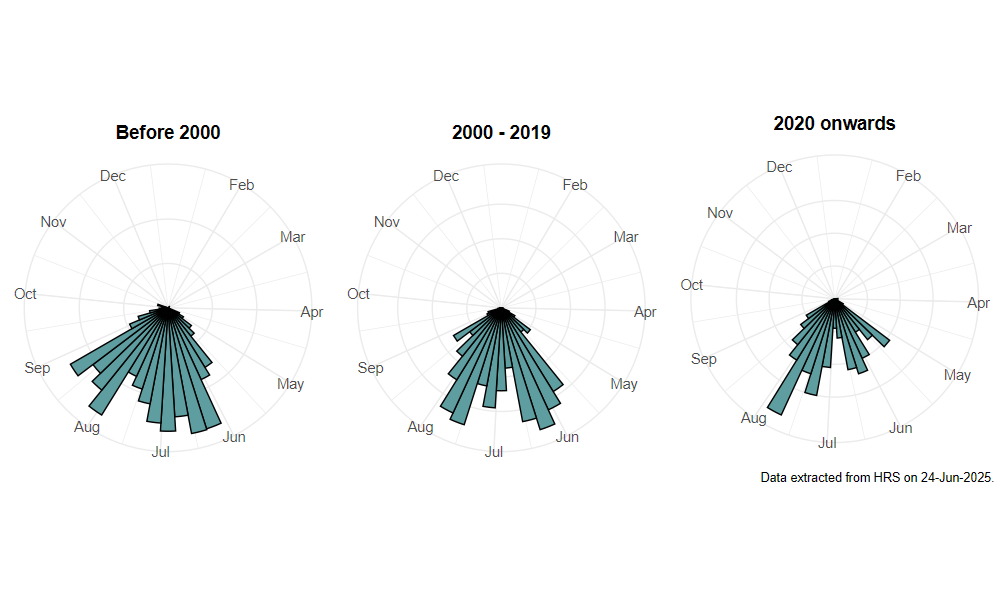Orthonevra nobilis (Fallén, 1817)
Identification
Identification difficulty = 2. ![]()
![]() according to Ball & Morris, 20241
according to Ball & Morris, 20241
Biology
The larva is aquatic and has been found in organically enriched mud in springs and flushes. Adults are usually found by sweeping lush vegetation in marshes and fens, but they can also be seen visiting flowers. Occasionally found well away from wetlands.
Flight period
The following plots show the number of unique records per week excluding those reported to be of immature stages.

Distribution
Widespread in wetlands throughout Britain, but most frequent in southern lowland areas. Adults appear to be very mobile and can be found well away from wet sites.

Trends
The following plots show the Frescalo TFactor vs year and a map of the rescaled frequency (all records) for the species.
-
Ball, S., & Morris, R. (2024). Hoverflies of Britain and Ireland. WILDGuides (3rd ed.). Oxford: Princeton University Press. ↩